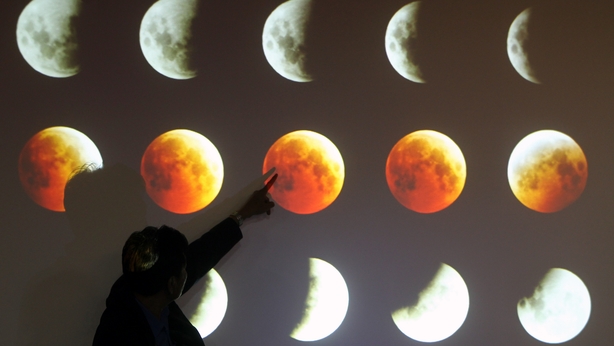Stargazers in the Americas and Asia were treated to a lunar eclipse today - a celestial show that bathed the moon in red to create a 'blood moon'.
During the total lunar eclipse, which lasted several hours, the Earth passed between the sun and the moon.
As it happened, the moon reflected sunlight scattered in the Earth's atmosphere, taking on a red hue.
The early phase of the eclipse began at 4am on the east coast of the United States and continued until sunrise.
In eastern Asia, the eclipse began shortly after moonrise.
The total eclipse phase lasted for around an hour before moving to a partial eclipse.
Free viewing locations were set up in a number of cities in Asia, Australia and New Zealand.
Amateur astronomists in Africa or Europe were out of luck, as the event was not visible in those regions.

The eclipse was the second of four total lunar eclipses, starting with a first "blood moon" on 15 April, in a series astronomers call a tetrad.
The next two total lunar eclipses will be on 4 April and 28 September of next year.
The last time a tetrad took place was in 2003-2004, with the next predicted for 2032-2033. In total, the 21st century will see eight tetrads.

